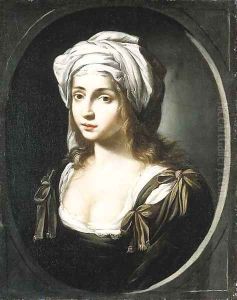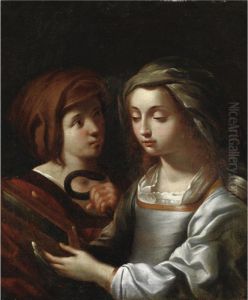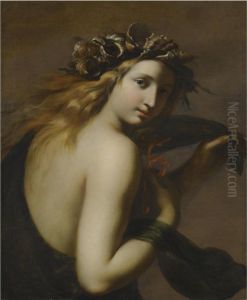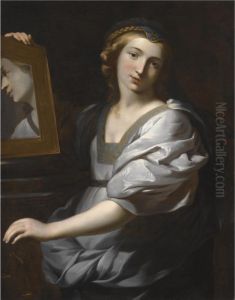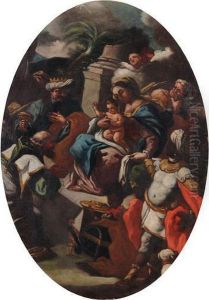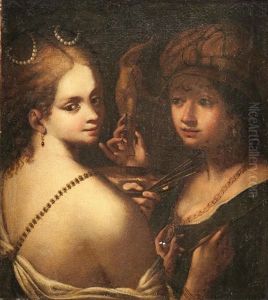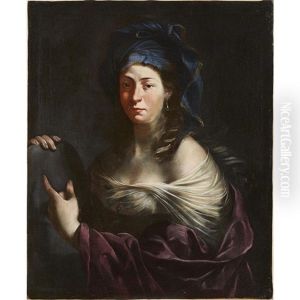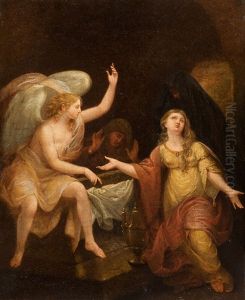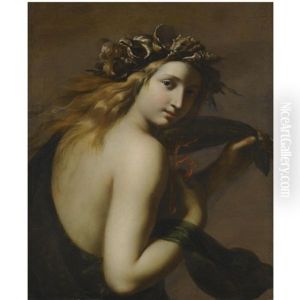Ginevra Cantofoli Paintings
Ginevra Cantofoli was an Italian painter born in 1618 in Bologna, a city with a vibrant artistic community and the presence of the Carracci Academy, which had a significant influence on the development of Baroque painting in the region. Despite the limitations placed on women in the arts during the 17th century, Cantofoli was able to pursue her artistic career, which was an exceptional achievement for a woman at that time.
Cantofoli's artistic training is not well-documented, but it is believed that she was a pupil of the prominent Bolognese painter Elisabetta Sirani, who was one of the few successful female artists of that era and had a workshop that was largely staffed by women. Working in the Baroque style, Cantofoli developed a reputation for her skill in painting religious subjects, portraits, and still lifes. Her work was characterized by a delicate and graceful touch, with a particular talent for rendering textures and details.
While the full extent of her oeuvre is unknown, Cantofoli's surviving works suggest that she enjoyed a degree of recognition and patronage during her lifetime. Unfortunately, like many women artists of the past, her contributions have been somewhat overshadowed by those of her male contemporaries. Nonetheless, Cantofoli's legacy is preserved in several paintings attributed to her that exist in private collections and public institutions, primarily in Italy.
Ginevra Cantofoli died in 1672 in Bologna. Her career, though not as extensively documented as some of her male counterparts, provides insight into the opportunities and limitations experienced by female artists in the Baroque period. Recent scholarship has sought to reassess and revalue the works of women like Cantofoli, bringing their stories and talents back into the historical narrative of art.
